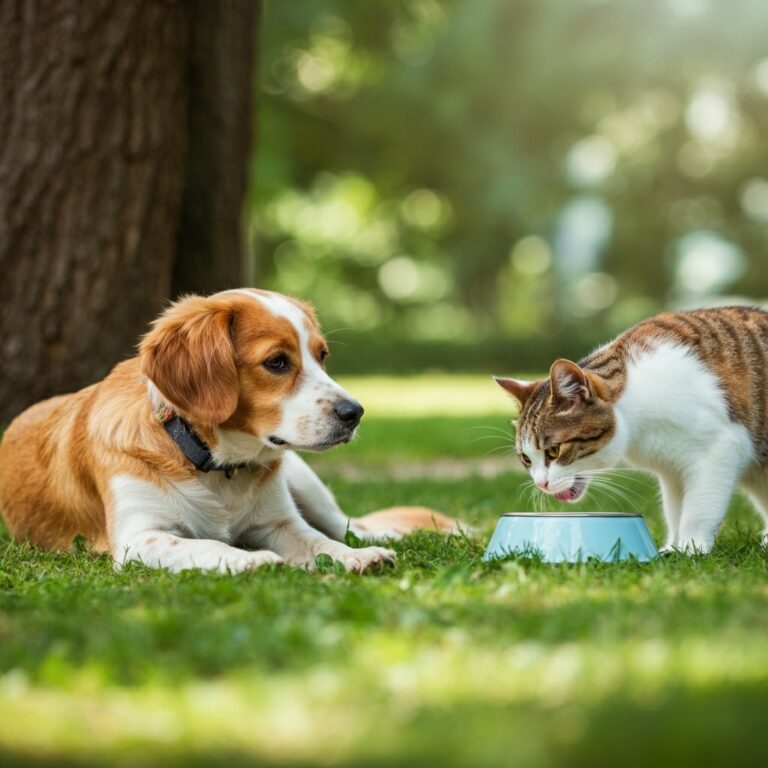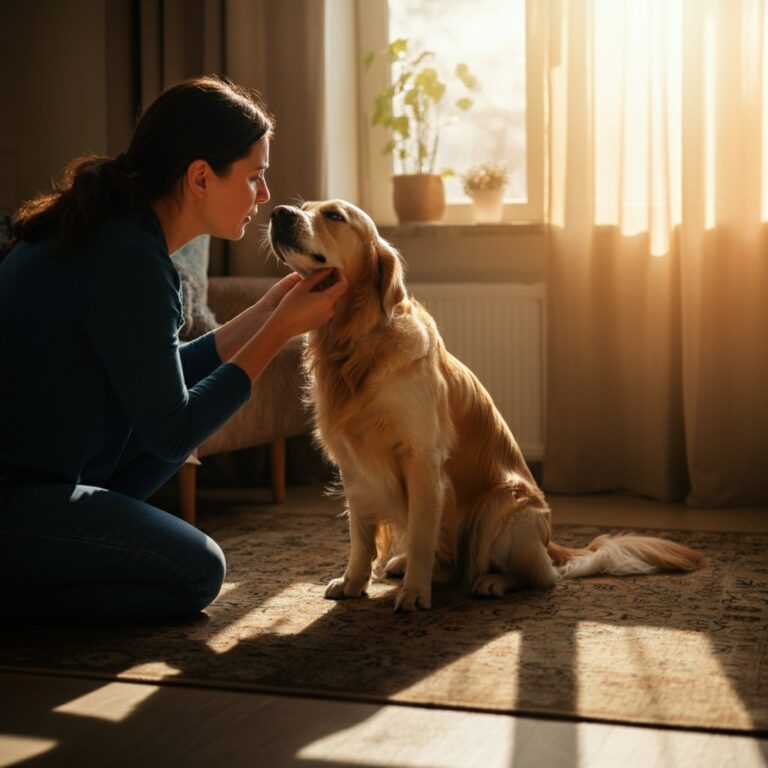
Watching your beloved companion slow down can be heartbreaking. That energetic puppy who once bounded up stairs now hesitates at the first step. Your agile cat who used to leap onto high perches now struggles to reach their favorite windowsill. While aging is natural, the right exercises can help your senior pet maintain mobility, reduce joint pain, and enjoy a higher quality of life well into their golden years.
Senior pets face unique mobility challenges as they age. Arthritis affects up to 80% of dogs over eight years old, while joint stiffness and muscle weakness can significantly impact their daily activities. However, regular, gentle exercise remains one of the most effective ways to combat these age-related changes. The key lies in choosing appropriate activities that strengthen muscles, improve flexibility, and support joint health without causing additional strain.
This guide explores five proven exercises specifically designed for senior pets. Each activity can be adapted to your pet’s current fitness level and mobility limitations, ensuring they receive the movement they need to stay healthy and comfortable. Whether your companion is just beginning to show signs of aging or is already dealing with mobility issues, these exercises offer a path toward better physical health and renewed vitality.
Swimming: The Ultimate Low-Impact Exercise
Swimming stands out as the gold standard for senior pet exercise. The buoyancy of water supports your pet’s body weight, eliminating stress on joints while providing excellent cardiovascular benefits and muscle strengthening.
Water therapy offers remarkable advantages for aging pets. The hydrostatic pressure of water helps reduce swelling in joints, while the resistance provides gentle strengthening for muscles without impact. Many pets who struggle with land-based activities find renewed freedom of movement in water.
Getting Started with Swimming
Begin with shallow water sessions where your pet can stand comfortably. Most pets need time to adjust to water exercise, especially if they haven’t swum regularly. Start with 5-10 minute sessions, gradually increasing duration as your pet builds stamina and confidence.
Professional hydrotherapy facilities offer controlled environments with trained staff, but you can also use natural bodies of water or even large kiddie pools for smaller pets. Always supervise water activities closely and consider a well-fitted life jacket for safety, even for previously strong swimmers.
Adapting Swimming for Different Abilities
For pets with severe mobility limitations, assisted swimming works wonderfully. Support your pet’s body while allowing their legs to move freely in the water. This maintains range of motion in joints while providing gentle muscle activation.
Dogs who resist full swimming can benefit from walking in chest-deep water. This reduces joint loading by approximately 60% while still providing resistance training. Cats, though less commonly associated with water exercise, can sometimes be encouraged to walk through shallow warm water for similar benefits.
Gentle Walking: Building Endurance at Your Pet’s Pace
Walking remains one of the most accessible forms of exercise for senior pets, but the approach needs modification from their younger years. The goal shifts from high-intensity exercise to maintaining consistent, gentle movement that supports joint mobility and cardiovascular health.
Creating the Perfect Walking Routine
Senior pets benefit from shorter, more frequent walks rather than single long outings. Three 10-15 minute walks throughout the day often work better than one 45-minute session. This approach prevents overexertion while maintaining regular movement throughout the day.
Pay attention to surfaces when planning routes. Soft grass or dirt paths provide better joint cushioning than concrete or asphalt. Avoid steep inclines that can strain arthritic joints, opting instead for flat or gently rolling terrain.
Reading Your Pet’s Signals
Senior pets may not show obvious signs of fatigue until they’re overexerted. Watch for heavy panting, reluctance to continue, or limping during or after walks. These signals indicate the need to reduce intensity or duration.
Temperature considerations become more critical with older pets. Their ability to regulate body temperature decreases with age, making early morning or evening walks preferable during warm weather. In cold conditions, consider protective clothing to keep joints warm and comfortable.
Indoor Walking Alternatives
Weather or mobility limitations don’t have to end walking routines. Indoor walking can be equally beneficial, especially when combined with environmental enrichment. Create indoor obstacle courses using pillows or boxes to encourage gentle navigation and engagement.
For pets with significant mobility challenges, even short walks around the house help maintain muscle tone and joint flexibility. The key is consistency rather than distance or intensity.
Balance and Coordination Exercises
Balance naturally declines with age in pets, leading to increased fall risk and reduced confidence in movement. Targeted balance exercises help maintain proprioception—your pet’s awareness of their body position in space—while strengthening the small stabilizing muscles that support coordination.
Simple Balance Challenges
Start with basic exercises that challenge your pet’s balance systems gently. Having your dog or cat stand on slightly uneven surfaces, such as a folded blanket or cushion, engages stabilizing muscles and improves balance responses.
Controlled standing exercises work well for dogs. Ask your pet to stand still for gradually increasing periods, rewarding them for maintaining position. Begin with 10-15 seconds and slowly work up to a minute or more as their balance improves.
Dynamic Balance Work
Once your pet masters static balance, introduce gentle movement challenges. Slow-motion obstacle courses using low hurdles or cones encourage careful foot placement and body awareness. Even walking over broomsticks placed flat on the ground provides valuable balance training.
Figure-eight walking patterns help improve coordination and lateral balance. Use treats or toys to guide your pet through the pattern, keeping movements slow and controlled. This exercise particularly benefits pets showing signs of neurological aging.
Feline Balance Activities
Cats naturally possess excellent balance, but senior felines can benefit from specific exercises too. Encourage your cat to walk along wider surfaces that simulate their natural inclination to walk on fences or railings. A sturdy board placed on the ground provides a safe balance challenge.
Continues after advertising
Interactive toys that require careful paw placement also serve as balance exercises. Puzzle feeders or treat balls encourage precise movements while providing mental stimulation.
Range of Motion and Stretching
Maintaining joint flexibility becomes increasingly important as pets age. Range of motion exercises help prevent stiffness, reduce pain, and maintain functional movement patterns that support daily activities.
Understanding Passive Range of Motion
Passive range of motion involves gently moving your pet’s joints through their natural movement patterns while they remain relaxed. This technique helps maintain joint flexibility and can provide pain relief for arthritic pets.
Focus on major joints including shoulders, elbows, hips, and knees. Gentle circular motions and careful flexion and extension help maintain mobility. Always work within your pet’s comfort zone, stopping if you encounter resistance or signs of discomfort.
Active Stretching Techniques
Active stretching encourages your pet to move their own joints through full ranges of motion. Simple techniques include encouraging reaching movements for treats placed at various heights and distances.
The “bow” stretch works particularly well for dogs. Hold a treat near your dog’s chest, then slowly move it toward the ground between their front legs. This encourages a natural stretching position that targets the shoulders and back.
Incorporating Stretching into Daily Routines
Regular stretching sessions work best when integrated into daily activities. Many pets enjoy gentle massage combined with range of motion exercises, making this a bonding activity as well as physical therapy.
Morning stretching can help pets work through overnight stiffness, while evening sessions can provide relaxation and pain relief. Keep sessions short—10-15 minutes is usually sufficient—and always end on a positive note with treats and praise.
Strength-Building Activities
Maintaining muscle mass becomes crucial for senior pets as age-related muscle loss accelerates without intervention. Gentle strength-building exercises help preserve the muscle mass needed for daily activities while supporting joint stability.
Resistance Training for Pets
Water provides excellent resistance for strength training, but land-based activities also offer benefits. Walking or standing on sand, grass, or other soft surfaces requires more muscle activation than hard surfaces.
Hill walking, when appropriate for your pet’s condition, provides natural resistance training. Even gentle inclines engage different muscle groups and provide cardiovascular benefits. Always start with minimal elevation and increase gradually.
Controlled Movement Exercises
Sit-to-stand exercises work wonderfully for dogs with adequate hip and knee function. Ask your dog to sit, then stand, repeating several times in succession. This movement pattern strengthens the large muscles of the hindquarters while improving functional mobility.
Step-ups using low, stable surfaces help build strength in multiple muscle groups. Start with surfaces just a few inches high, allowing your pet to step up and down repeatedly. This exercise particularly benefits pets who need to navigate stairs in their daily lives.
Strength Training for Cats
Cats benefit from strength exercises that incorporate their natural behaviors. Vertical scratching posts encourage reaching and stretching movements that maintain shoulder and back strength.
Interactive play sessions with wand toys encourage jumping and pouncing movements that provide strength training while maintaining hunting instincts. Keep sessions brief but frequent to avoid overexertion.
Frequently Asked Questions
How often should senior pets exercise?
Senior pets benefit from daily exercise, but sessions should be shorter and less intense than those for younger animals. Aim for 2-3 short exercise sessions per day rather than one long workout.
What signs indicate my pet is exercising too hard?
Excessive panting, reluctance to continue, limping, or unusual fatigue after exercise suggests the intensity is too high. Senior pets may also show increased stiffness the day after overexertion.
Can pets with arthritis still exercise safely?
Yes, but exercise routines need modification. Low-impact activities like swimming and gentle walking often provide the most benefit while minimizing joint stress. Always consult your veterinarian before starting new exercise programs for arthritic pets.
How do I motivate a reluctant senior pet to exercise?
Start very slowly and use high-value treats or favorite activities as motivation. Make exercise enjoyable by incorporating play elements or social interaction. Some pets respond better to exercising with their human companions.
Should I use joint supplements alongside exercise?
Many senior pets benefit from joint supplements, but these should be used under veterinary guidance. Supplements work best as part of a comprehensive approach that includes appropriate exercise, weight management, and regular veterinary care.
Read More👉 Fun Indoor Games to Play with Pets on Rainy Days
Supporting Your Pet’s Golden Years Through Movement
Regular exercise remains one of the most powerful tools for maintaining your senior pet’s quality of life. The five exercise types outlined—swimming, gentle walking, balance work, range of motion exercises, and strength building—provide a comprehensive approach to senior pet fitness that can be adapted to virtually any mobility level.
Remember that consistency matters more than intensity when exercising senior pets. Even pets with significant mobility limitations can benefit from gentle, regular movement. Start slowly, pay attention to your pet’s responses, and adjust activities based on their individual needs and preferences.
Working with your veterinarian ensures that your exercise program supports your pet’s specific health needs. Many veterinary practices now offer rehabilitation services or can recommend certified animal physical therapists who specialize in senior pet care.
Your commitment to keeping your senior pet active today pays dividends in their comfort and mobility tomorrow. These exercises not only help maintain physical function but also provide mental stimulation and bonding opportunities that enrich your pet’s golden years. Every gentle walk, swim session, or stretching routine is an investment in more comfortable, active days ahead for your beloved companion.



